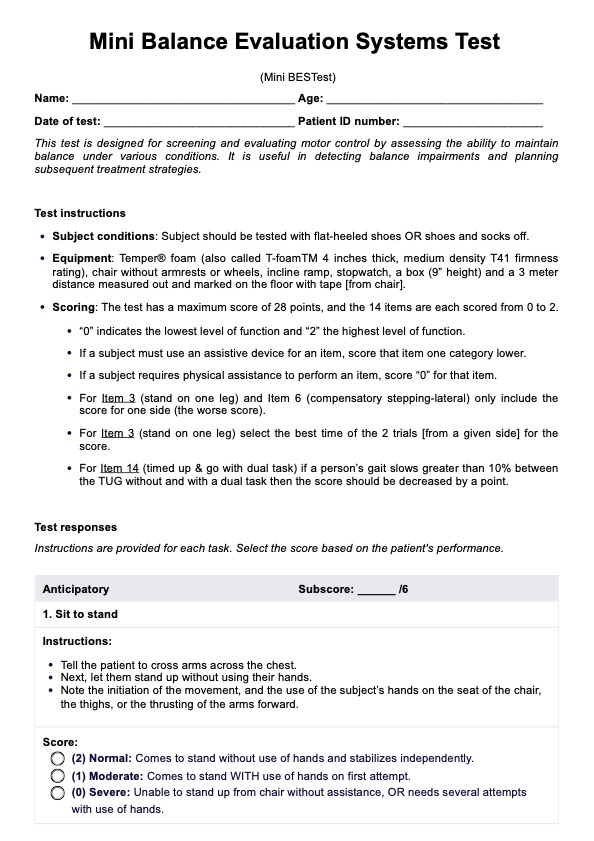It should take between 15 to 30 minutes to fully accomplish the Mini BESTest. This will depend on how capable your patient is.

Downland our Mini-BESTest to evaluate older adults' neurological conditions with their balance deficits and capabilities.
It should take between 15 to 30 minutes to fully accomplish the Mini BESTest. This will depend on how capable your patient is.
The Mini BESTest can be used on various populations whenever the balance is concerned, but this assessment is often conducted by physical therapists and similar professionals to assess older adults and people with neurological conditions that have negatively impacted their balance.
While it's an effective and accurate assessment tool, we recommend using other assessments to get consistent results and cover more ground. This is so the next steps are well-informed.
EHR and practice management software
*No credit card required
Free
$0/usd
Unlimited clients
Telehealth
1GB of storage
Client portal text
Automated billing and online payments